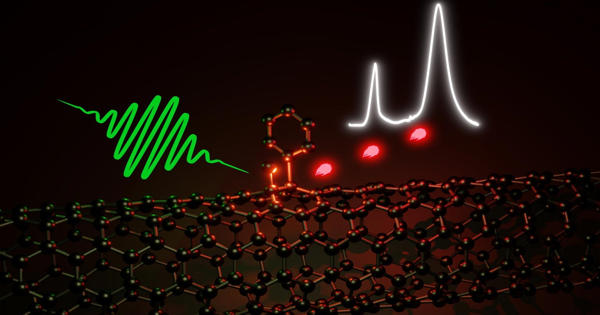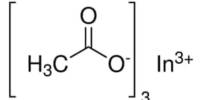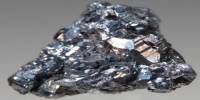Cerium monoselenide is an inorganic compound with the chemical formula CeSe. It exists in the form of Ce3+Se2−(e−). It is an inorganic compound composed of cerium (Ce) and selenium (Se). It is a member of the rare earth monoselenides, typically with interesting electrical, magnetic, and structural properties.
Cerium monoselenide (CeSe) is a synthetic rare-earth chalcogenide with interesting electrical and magnetic behavior. It is not naturally occurring and must be synthesized under controlled conditions. Research continues to explore its potential in electronics and magnetics, especially involving strong electron correlations.
Properties
Like many other rare earth monochalcogenides, Cerium monoselenide has metallic-type electrical conductivity and a NaCl-type crystal structure.
- Chemical formula: CeSe
- Appearance: purple solid
- Molar Mass: ~203.08 g/mol
- Crystal Structure: NaCl-type cubic structure (rock salt)
- Color: Usually dark gray to black
- Density: Approx. 6.2–6.5 g/cm³
- Melting Point: Not well-documented; expected high (~>1000 °C)
- Electrical Properties: Metallic or semimetallic
Preparation
Cerium monoselenide can be obtained by reducing cerium selenide with metallic sodium at 600 °C (or calcium at 1000 °C):
Ce2Se3 + 2Na → 2CeSe + Na2Se
The reduction of cerium selenide by cerium dihydride can also produce cerium monoselenide:
Ce2Se3 + CeH2 → 3 CeSe + H2↑
Electronic and Magnetic Properties
Metallic conductivity: CeSe behaves as a metallic or semi-metallic conductor.
Mixed valency: Cerium in CeSe can exhibit mixed valence states (Ce³⁺ and Ce⁴⁺), leading to complex magnetic and electronic behavior.
Magnetism: Can exhibit antiferromagnetic ordering at low temperatures, though this depends on purity and synthesis method.
Natural Occurrence
CeSe does not occur naturally as a mineral.
It is synthesized in laboratories or industrially via direct combination:
Ce (metal) + Se (elemental)→CeSe
This reaction typically requires high temperatures and inert or vacuum atmospheres to prevent oxidation.
Synthesis Methods
Solid-state reaction:
- Heating elemental cerium and selenium in a vacuum or argon atmosphere at 800–1000 °C.
- Arc melting or ampoule synthesis can also be used for high-purity samples.
Applications
- Rare earth monoselenides like CeSe are studied for:
- Thermoelectric materials
- Magnetic semiconductors
- Spintronic devices
- High-temperature materials
CeSe is of interest in fundamental condensed matter physics due to its correlated electron systems (strong interaction between f-electrons and conduction electrons).















